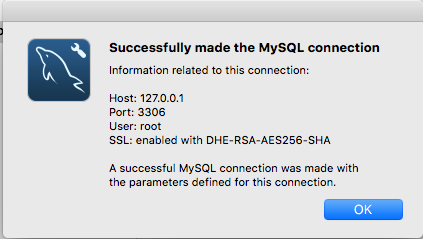In this tutorial, we will show you how to change MySQL user password. The instructions should work with any modern Linux distribution such as Ubuntu 18. Depending on the MySQL or MariaDB server version you are running on your system, you will need to use different commands to change the user password. It is also possible, if you have sudo rights, to change user passwords as well as to define rules for password change on the host.
Mysql command to change a user password. MySQL -show- users : To see the MySQL Database all users you can use using the below comman so you can get a clear idea which user ’s password you want to change : SELECT User FROM mysql. Open the command terminal and connect to the MySQL user and enter the MySQL root user password to. Resetting your MySQL password.
Alright, so you’ve created a new MySQL Database, you’ve added a user , even granted permissions to the user. Yet, that user forgot the password to their MySQL user account. How do you change the user ’s password ? There are several ways to do this, one of which we can do without even entering the MySQL command console.

These instructions are intended for setting the password for all MySQL users named root on Linux via the command line. However, they can also be followed to change the password for any MySQL user. I want to change the password I assigned to root on my Debian webserver to something longer and more secure.
I’ll be logged in as root. I am a new user of Debian Linux operating systems. I need to change the password for root user account on a Debian Linux. Running MySQL with the —skip-grant-tables option enabled is highly insecure, and should only be done for a brief period while you reset the password. The steps below show you how to stop the mysqld_safe server instance safely and start the MySQL server securely after you have reset the root password.
The ISPConfig logn does not use the MySQL root password. As you can see resetting the MySQL root password using debian -sys-maint user is very simple and straightforward. This tutorial explains how you can set, change and reset (if youve forgotten the password ) MySQ.
To change a password on behalf of a user , first sign on or su to the root account. The system will prompt you to enter a password. Passwords do not echo to the screen when you enter them. Now you need to Setup new MySQL root user password.
Note: Replace newrootpassword with the new root password for MySQL server. Flush Privileges is needed to making the password change effect immediately. Question: I would like to change password for user called “neo” using MySQL command. How can I do this for both servers?
Enter current password for root (enter for none): mysqlsamplepassword. Change the root password ? By mistake I have set the password of root user. Finally and change again the password with what you. The MySQL root password allows access only to the MySQL database.
The Cloud Server password allows access to the server. Sometimes while playing with root user ’s privileges to allow its access remotely may change its password. Or if you have forgotten the root user ’s password. Then you can not access the MySQL DB without the. This post will guide you how to create, change or reset MySQL or MariaDB user password under Linux operating system terminal.
For a Linux new user or MySQL new user , how to reset a password for a normal user in the MySQL server. Login to MySQL command prompt and execute below query to view current settings of validate_ password. Users with UPDATE on mysql database can update passwords for other users using SET PASSWORD or in MySQL 5. If the read_only option is enable in addition to the privileges above, SUPER is required. Debian will now boot into single user mode, with the root filesystem mounted in “read-only mode“. So, use below command to mount the root file system in “read-write mode“.

Finally, change the root user password using “passwd” command. Wir öffnen uns eine 2te SSH Session und loggen uns als MySQL -root ein, und benutzen den MySQL Query um das Passwort zu ändern. Danach Flushen wir die Privilegien und beenden diese 2te Session wieder.
Keine Kommentare:
Kommentar veröffentlichen
Hinweis: Nur ein Mitglied dieses Blogs kann Kommentare posten.